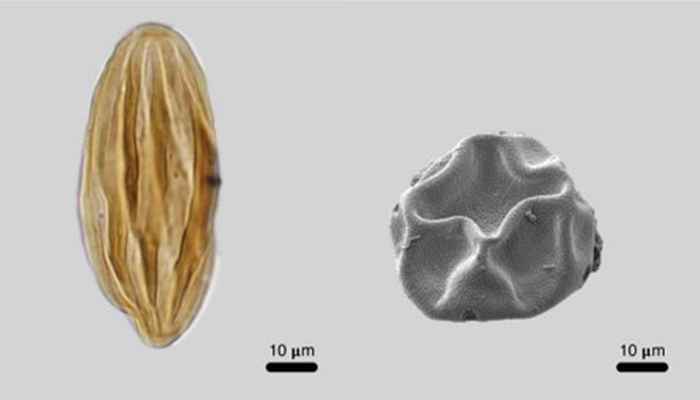Eocene climate change brought monsoons to dry Central Asia
29 January 2024

In many sediments worldwide both in the sea and on land, evidence for a sudden global temperature rise of about six degrees within a few thousand years around 56 million years ago have been identified. This period in time marks the transition from the geological epoch of the Paleocene into the Eocene. “It was a big climatic event”, says fossil pollen expert Carina Hoorn from the Institute of Biodiversity and Ecosystem Dynamics (IBED, UvA).
Until now, Central Asia was one of the few parts of the world in which there were no findings of this so-called Paleocene-Eocene Thermal Maximum (PETM). Hoorn: “So we are very excited that we have now been able to identify the PETM in this area. We found proof that in Tibet, this resulted in a change of the former dry, steppe-like ecosystem with a shrubby vegetation into a humid, deciduous forest landscape with walnut and elm among others.”
Fossil pollen and soils agree: increased summer precipitation
The scientists attribute the unusually wet period to a far inland expansion of seasonal precipitation - so-called proto-monsoons. This had far-stretching consequences. "The abrupt greening of the Central Asian steppe desert, driven by monsoons, highlights the intricate feedbacks between rainfall, vegetation and possibly also the global carbon cycle", says first author Niels Meijer from the Senckenberg Biodiversity and Climate Research Centre in Frankfurt am Main.
In order to reconstruct the rainfall patterns of that time, the researchers combined their expertise to combine evidence from fossil pollen and spores with geochemical data from fossil soils. Meijer: ”This enabled us to show that the soils dried out in winter, meaning that, contrary to expectations, most of the precipitation fell during the summer period - comparable to the modern monsoon."
Asian monsoons respond abruptly and non-linear
A strong warming such as during the PETM would also in our current time have strong implications for the ecosystem of Central Asia. Today, vast treeless steppes characterize the landscape of Central Asia. and one of the great uncertainties of global climate change is how the Asian monsoon and the regions in Central Asia shaped by it will react to future changes in climate. Meijer: “Although the seas and mountains of Asia 56 million years ago were very different from today, the data highlight the potential for abrupt changes in Central Asian precipitation and ecosystems under future global warming with all the consequences for their inhabitants such as the Saiga antelope or the endangered Przewalski's horse.”
Publication
Proto-monsoon rainfall and greening in Central Asia due to extreme early Eocene warmth
Niels Meijer, Alexis Licht, Amber Woutersen*, Carina Hoorn*, Faez Robin-Champigneul, Alexander Rohrmann, Mattia Tagliavento, Julia Brugger, Fanni D. Kelemen, Andrew Schauer, Micheal Hren, Aijun Sun, Jens Fiebig, Andreas Mulch, Guillaume Dupont-Nivet
https://doi.org/10.1038/s41561-023-01371-4
* Affiliated to the University of Amsterdam

